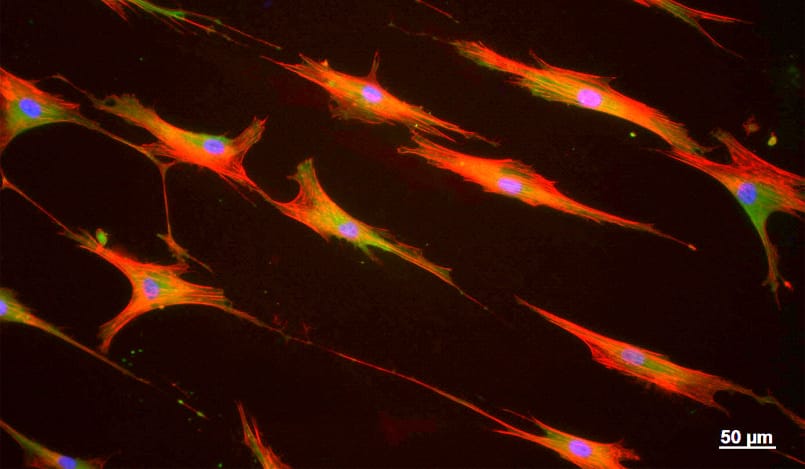Patterning of proteins and cells
To undertake localised immobilisation of proteins on substrates and to study the effect of topography on cell proliferation and differentiation.
Obtaining surfaces for cell proliferation and differentiation.

The interaction of cells with substrates is a wide field of research given its relevance for various applications.
In particular, the extracellular matrix has different topographic and adhesive characteristics. In this line, Tekniker has worked on the manufacture of structures such as pillars, lines, holes, etc. for the study of the cell response to the surface topography of a substrate, employing both biodegradable polymers and glucosaminoglycan-based natural polymers (GAGs).
The extracellular matrix also has adhesive and non-adhesive features that Tekniker have replicated through the localised immobilisation of proteins or through the immobilisation of GAGs (also involving the subsequent immobilisation of proteins on these), in order to carry out studies on stem cell differentiation in bone and neuronal lines.
